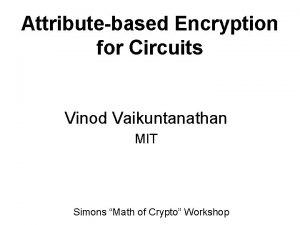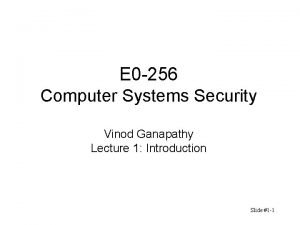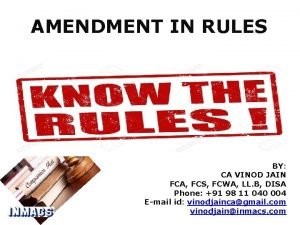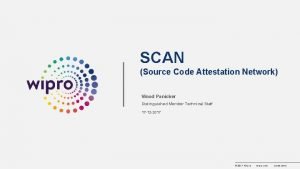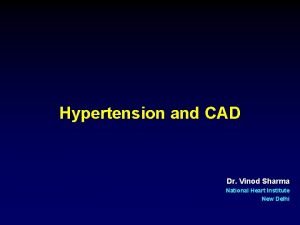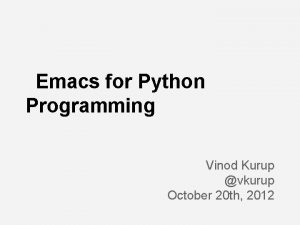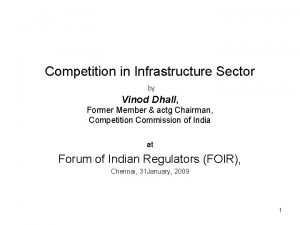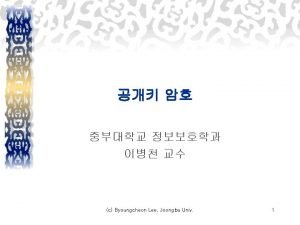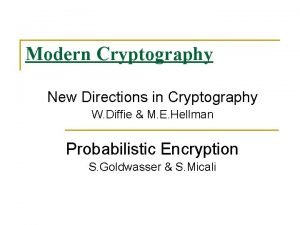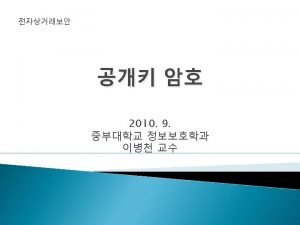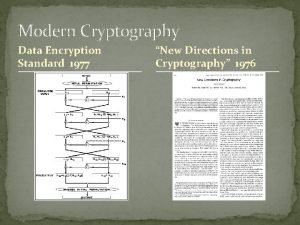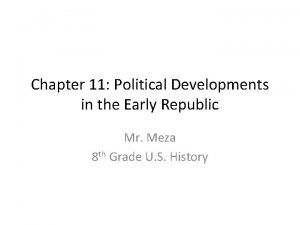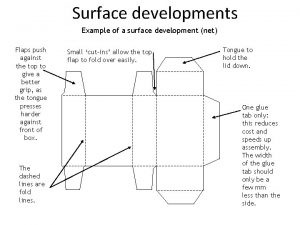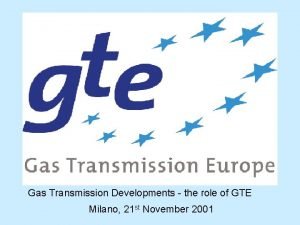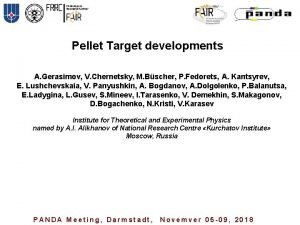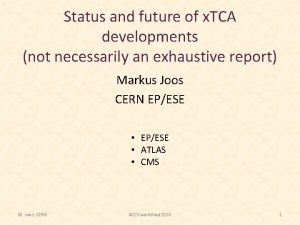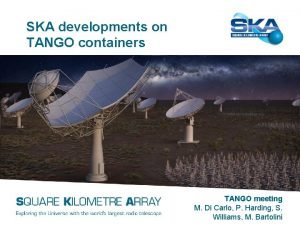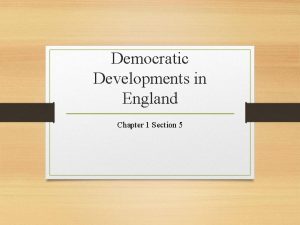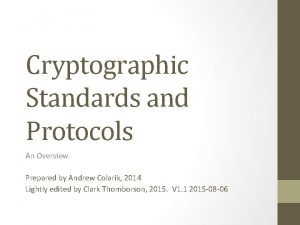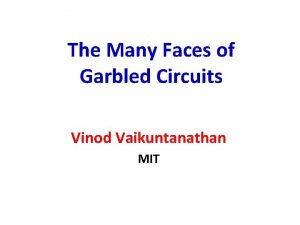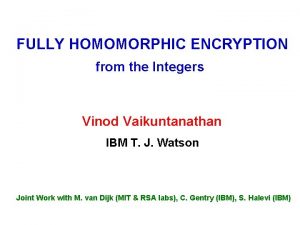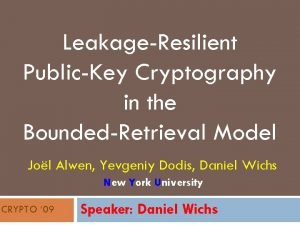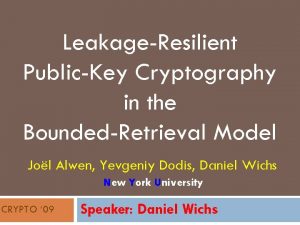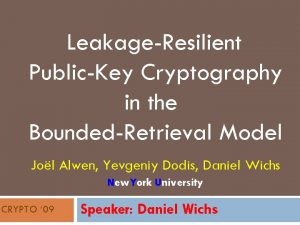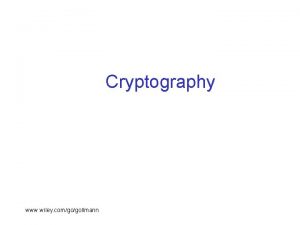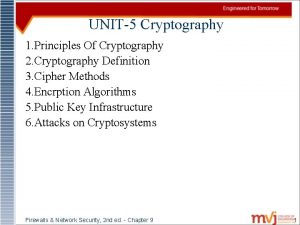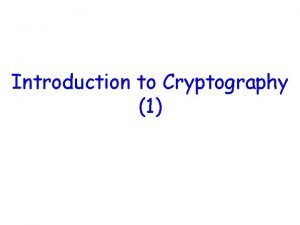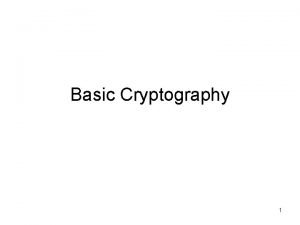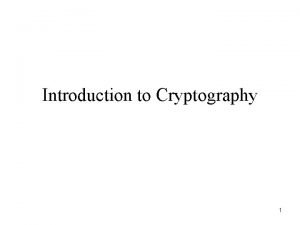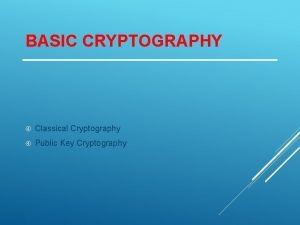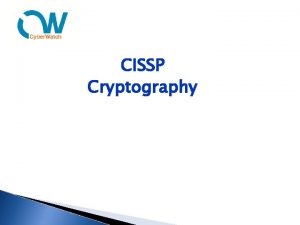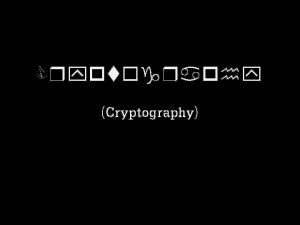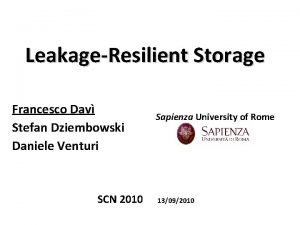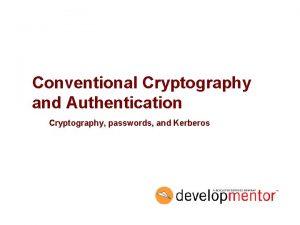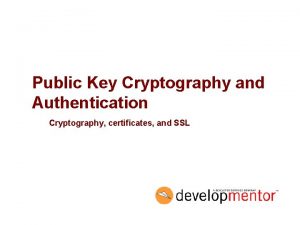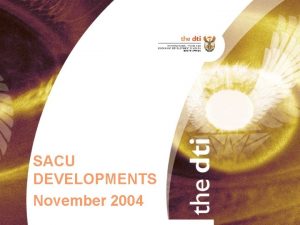LeakageResilient Cryptography New Developments and Challenges Vinod Vaikuntanathan





![Interpreting the Commandments (or, Two Leakage Models) A Simple Interpretation: Bounded Leakage [AGV 09] Interpreting the Commandments (or, Two Leakage Models) A Simple Interpretation: Bounded Leakage [AGV 09]](https://slidetodoc.com/presentation_image_h/72ff156ecdb32a3ab393f98e5090c6e9/image-6.jpg)
![Interpreting the Commandments (or, Two Leakage Models) A Simple Interpretation: Bounded Leakage [AGV 09] Interpreting the Commandments (or, Two Leakage Models) A Simple Interpretation: Bounded Leakage [AGV 09]](https://slidetodoc.com/presentation_image_h/72ff156ecdb32a3ab393f98e5090c6e9/image-7.jpg)






![[Ishai-Sahai-Wagner 2003] [Micali-Reyzin 2004] [Dodis-Ong-Prabhakaran-Sahai 2004] [Ishai-Prabhakaran-Sahai-Wagner 2006] [Dziembowski-Pietrzak 2008] [Akavia-Goldwasser-V. 2009] [Pietrzak 2009] [Ishai-Sahai-Wagner 2003] [Micali-Reyzin 2004] [Dodis-Ong-Prabhakaran-Sahai 2004] [Ishai-Prabhakaran-Sahai-Wagner 2006] [Dziembowski-Pietrzak 2008] [Akavia-Goldwasser-V. 2009] [Pietrzak 2009]](https://slidetodoc.com/presentation_image_h/72ff156ecdb32a3ab393f98e5090c6e9/image-14.jpg)


![Leakage-Resilient One-way Functions Theorem [KV 09, ADW 09]: If there are Universal One-way Hash Leakage-Resilient One-way Functions Theorem [KV 09, ADW 09]: If there are Universal One-way Hash](https://slidetodoc.com/presentation_image_h/72ff156ecdb32a3ab393f98e5090c6e9/image-17.jpg)





![Leakage-Resilient Signatures Theorem [KV 09]: λ-leakage-resilient OWF (+simulationextractable NIZK [S 99, DDOPS 01]) → Leakage-Resilient Signatures Theorem [KV 09]: λ-leakage-resilient OWF (+simulationextractable NIZK [S 99, DDOPS 01]) →](https://slidetodoc.com/presentation_image_h/72ff156ecdb32a3ab393f98e5090c6e9/image-23.jpg)
![LR Signatures: Subsequent Results q [ADW 09]: Fiat-Shamir transform + LR OWFs → LRSigs LR Signatures: Subsequent Results q [ADW 09]: Fiat-Shamir transform + LR OWFs → LRSigs](https://slidetodoc.com/presentation_image_h/72ff156ecdb32a3ab393f98e5090c6e9/image-24.jpg)






![LR Public-key Encryption: Subsequent Results q [NS 09]: CPA-secure → CCA-secure with the same LR Public-key Encryption: Subsequent Results q [NS 09]: CPA-secure → CCA-secure with the same](https://slidetodoc.com/presentation_image_h/72ff156ecdb32a3ab393f98e5090c6e9/image-31.jpg)


![Continual LR Public-key Encryption Theorem: [BKKV 10] CLR-secure public-key encryption schemes that tolerate (in Continual LR Public-key Encryption Theorem: [BKKV 10] CLR-secure public-key encryption schemes that tolerate (in](https://slidetodoc.com/presentation_image_h/72ff156ecdb32a3ab393f98e5090c6e9/image-34.jpg)
![Continual LR Public-key Encryption Other Results: q [BKKV 10]: CLR-secure signatures and IBE (with Continual LR Public-key Encryption Other Results: q [BKKV 10]: CLR-secure signatures and IBE (with](https://slidetodoc.com/presentation_image_h/72ff156ecdb32a3ab393f98e5090c6e9/image-35.jpg)




![Foundational Questions Many Partial Results q [Ishai-Sahai-Wagner’ 03] : Any circuit → “Probing-resilient” circuit Foundational Questions Many Partial Results q [Ishai-Sahai-Wagner’ 03] : Any circuit → “Probing-resilient” circuit](https://slidetodoc.com/presentation_image_h/72ff156ecdb32a3ab393f98e5090c6e9/image-40.jpg)



- Slides: 43

Leakage-Resilient Cryptography New Developments and Challenges Vinod Vaikuntanathan Microsoft Research & U. Toronto

Secrets Information accessible to one party and not to other(s) Essential to cryptography! Theory Real life Secrets leak! [Kocher, Jaffe, Jun’ 98] [Quisquater’ 01] Cache-Timing [Bernstein’ 05, OST’ 05] [Kocher’ 96]

Secrets Leak So, what can we do about it?

Leakage-Resilient Cryptography Can we do Crypto with no (perfect) secrecy? secret Yes (in most cases) public A Fundamental Question in the Foundations of Cryptography

Three Commandments (Axioms of Leakage) I. Secrets leak in arbitrary ways. (except: leakage is polynomial time computable, and does not betray the entire secret key) [Micali-Reyzin’ 04] II. Secrets leak from everywhere. (hard-disk, RAM, cache, registers, randomness sources, …) III. Secrets leak all the time. (No protected time periods)
![Interpreting the Commandments or Two Leakage Models A Simple Interpretation Bounded Leakage AGV 09 Interpreting the Commandments (or, Two Leakage Models) A Simple Interpretation: Bounded Leakage [AGV 09]](https://slidetodoc.com/presentation_image_h/72ff156ecdb32a3ab393f98e5090c6e9/image-6.jpg)
Interpreting the Commandments (or, Two Leakage Models) A Simple Interpretation: Bounded Leakage [AGV 09] — — Adversary can learn any efficiently computable function L: {0, 1}* → {0, 1} λ of the secret key(*). Total leakage λ < |SK| [AGV 09, NS 09, KV 09, ADW 09, ADN+10, …] sk L(sk) 101 (*) Ideally, leakage from the entire secret state.
![Interpreting the Commandments or Two Leakage Models A Simple Interpretation Bounded Leakage AGV 09 Interpreting the Commandments (or, Two Leakage Models) A Simple Interpretation: Bounded Leakage [AGV 09]](https://slidetodoc.com/presentation_image_h/72ff156ecdb32a3ab393f98e5090c6e9/image-7.jpg)
Interpreting the Commandments (or, Two Leakage Models) A Simple Interpretation: Bounded Leakage [AGV 09] — Adversary can learn any efficiently computable function L: {0, 1}* → {0, 1} λ of the secret key. — Total leakage λ < |SK| [AGV 09, NS 09, KV 09, ADW 09, ADN+10, …] Variations: λ q Noisy Model [NS’ 09]: H∞(SK | L(SK)) > |SK|- q Auxiliary Input Model [DKL’ 09, DGKPV’ 10]: L is an uninvertible function of SK

Interpreting the Commandments (or, Two Leakage Models) A Realistic Interpretation: Continual Leakage — — [ISW 03 MR 04, DP 08, Pie 09, FKPR 10, FRRTV 10, BKKV 10, DHLW 10…] Adversary can learn any efficiently computable function Li: {0, 1}* → {0, 1}λ of the secret key at each “time-period” Rate of Leakage λ (leakage/time period) < |SK| L 1(sk) sk L 2(sk) 101 001

Interpreting the Commandments (or, Two Leakage Models) A Realistic Interpretation: Continual Leakage — — [ISW 03 MR 04, DP 08, Pie 09, FKPR 10, FRRTV 10, BKKV 10, DHLW 10…] Adversary can learn any efficiently computable function Li: {0, 1}* → {0, 1}λ of the secret key at each “time-period” Rate of Leakage λ (leakage/time period) < |SK| Observations: — Of course, secret key should be refreshed in each time. — Non-trivial: Refresh SK without changing PK (in publickey systems), or without co-ordination (in SK systems)

Talk Plan PART 1: Bounded Leakage Model – One-way Functions – Digital Signatures – Public-key Encryption PART 2: Continual Leakage Model PART 3: Some Research Directions – Leakage-resilient Compilers, Tamper Resistance, …

A Brief History of Leakage in Crypto “We stand on the shoulders of giants…”

A Brief History of Leakage in Crypto q Privacy Amplification [von Neumann’ 46, …, Bennett-Brassard-Robert’ 8 — “Distill an perfectly random shared key from an imperfect one” l Bounded Storage/Retrieval Models [Maurer’ 92, …, Di Crescenzo-Lipton-Walfish’ 06, Dziembowski’ 06] Exposure-Resilient Cryptography [Rivest’ 97, Boyko’ 98, CDHKS’ 00, ISW’ 03, IPSW’ 06] — More generally, MPC, threshold crypto etc. — Leakage = a subset of bits of SK — We want to tolerate arbitrary (PPT) leakage functions (axiom 1)

A Brief History of Leakage in Crypto q Privacy Amplification [von Neumann’ 46, …, Bennett-Brassard-Robert’ 8 — “Distill an perfectly random shared key from an imperfect one” l Bounded Storage/Retrieval Models [Maurer’ 92, …, Di Crescenzo-Lipton-Walfish’ 06, Dziembowski’ 06] Exposure-Resilient Cryptography [Rivest’ 97, Boyko’ 98, CDHKS’ 00, ISW’ 03, IPSW’ 06] v Proactive Cryptography [HJKY’ 95, HJJKY’ 97, R’ 98] — “How to cope with perpetual leakage” (a continual leakage model)
![IshaiSahaiWagner 2003 MicaliReyzin 2004 DodisOngPrabhakaranSahai 2004 IshaiPrabhakaranSahaiWagner 2006 DziembowskiPietrzak 2008 AkaviaGoldwasserV 2009 Pietrzak 2009 [Ishai-Sahai-Wagner 2003] [Micali-Reyzin 2004] [Dodis-Ong-Prabhakaran-Sahai 2004] [Ishai-Prabhakaran-Sahai-Wagner 2006] [Dziembowski-Pietrzak 2008] [Akavia-Goldwasser-V. 2009] [Pietrzak 2009]](https://slidetodoc.com/presentation_image_h/72ff156ecdb32a3ab393f98e5090c6e9/image-14.jpg)
[Ishai-Sahai-Wagner 2003] [Micali-Reyzin 2004] [Dodis-Ong-Prabhakaran-Sahai 2004] [Ishai-Prabhakaran-Sahai-Wagner 2006] [Dziembowski-Pietrzak 2008] [Akavia-Goldwasser-V. 2009] [Pietrzak 2009] [Dodis-Kalai-Lovett 2009] [Naor-Segev 2009] [Dodis-Goldwasser-Kalai-Peikert-V. 2009] [Katz-V. 2009] [Faust-Kiltz-Pietrzak-Rothblum 2009] [Alwen-Dodis-Wichs 2009] [Goldwasser-Kalai-Peikert-V. 2010] [Alwen-Dodis-Naor-Segev-Walfish-Wichs 2009] [Juma-Vahlis. 2010] [Faust-Rabin-Reyzin-Tromer-V. 2010] [Brakerski-Kalai-Katz-V. 2010] [Goldwasser-Rothblum. 2010] [Dodis-Haralambiev-Lopez-alt-Wichs. 2010] [Lewko-Waters. 2010] [Chow-Dodis-Rouselakis-Waters. 2010] [Boyle-Wichs-Segev. 2011] [Kiltz-Pietrzak. 2011]

Bounded Leakage

Leakage-Resilient One-way Functions Easy Observation: “Hardness Leakage-resilience” – Similar connections for other primitives (enc, sig, …) – Need 2 O(n)-hardness to get O(n)-LR.
![LeakageResilient Oneway Functions Theorem KV 09 ADW 09 If there are Universal Oneway Hash Leakage-Resilient One-way Functions Theorem [KV 09, ADW 09]: If there are Universal One-way Hash](https://slidetodoc.com/presentation_image_h/72ff156ecdb32a3ab393f98e5090c6e9/image-17.jpg)
Leakage-Resilient One-way Functions Theorem [KV 09, ADW 09]: If there are Universal One-way Hash Functions, then there are LR one-way functions. – Corollary [NY 89, Rom 90]: If OWF exist, then LR OWFs exist.

Leakage-Resilient One-way Functions Proof: q Information-theoretic + Crypto techniques q A Blue-print for most leakage-resilience proofs

Leakage-Resilient One-way Functions Proof: reduction (UOWHF-breaker) adversary

Leakage-Resilient One-way Functions y=f(x) x Proof: reduction adversary — H∞(x) = n — Adversary returns x'≠x w. p ≥ 1/2 → breaks UOWHF

A Blueprint for Leakage Proofs — Problem with many solutions — Hard: given one solution, find another — Security redn has one soln, computes leakage using that — Adversary doesn’t have enough info to pin-point the solution (information-theoretic argument) — Adversary returns a different soln, unwittingly solves the hard problem (computational argument)

Leakage-Resilient Signatures PK m sk Sign. SK(m) L L(SK) Cannot produce sign for a new m*
![LeakageResilient Signatures Theorem KV 09 λleakageresilient OWF simulationextractable NIZK S 99 DDOPS 01 Leakage-Resilient Signatures Theorem [KV 09]: λ-leakage-resilient OWF (+simulationextractable NIZK [S 99, DDOPS 01]) →](https://slidetodoc.com/presentation_image_h/72ff156ecdb32a3ab393f98e5090c6e9/image-23.jpg)
Leakage-Resilient Signatures Theorem [KV 09]: λ-leakage-resilient OWF (+simulationextractable NIZK [S 99, DDOPS 01]) → λ-leakage-resilient signatures similar to [Bellare-Goldwasser’ 92] PK: (f, y=f(x), CRSnizk), where f is an λ-LR OWF, SK: x Sign(m): Sim. Ext-NIZKm for “∃x s. t PK contains h(x)” Proof Idea: Sim-Ext — Signature contains no (computational) info. on SK — Forgery ⇒ extract a secret-key. — Break LR OWF.
![LR Signatures Subsequent Results q ADW 09 FiatShamir transform LR OWFs LRSigs LR Signatures: Subsequent Results q [ADW 09]: Fiat-Shamir transform + LR OWFs → LRSigs](https://slidetodoc.com/presentation_image_h/72ff156ecdb32a3ab393f98e5090c6e9/image-24.jpg)
LR Signatures: Subsequent Results q [ADW 09]: Fiat-Shamir transform + LR OWFs → LRSigs in the random oracle model. q [DHLW 10]: Efficient LR Sigs without random oracles (using bilinear maps). q [BKKV 10, DHLW 10]: Continual LR Sigs q [LLW 10]: Continual LR Sigs where the key update phase leaks as well q [BSW 11, MTVY 11]: (continual) LR Sigs where the randomness used for signing can leak as well.

Leakage-Resilient Public-key Encryption(cpa) PK sk L L(SK) Enc(b) (b←${0, 1}) Cannot predict b

Leakage-Resilient Public-key Encryption Theorem: For every λ < |SK| - secparam, (cpa-secure) public-key encryption that tolerates λ bits of leakage: – [AGV 09]: based on Lattices (show that [Regev 05, GPV 08] is leakage-resilient) – [NS 09, DGKPV 10] based on Diffie-Hellman (show that [BHHO 08] is leakage-resilient) – [NS 09] from any hash proof system [CS 02]

Construction Outline Adv. breaks For starters: Adv. finds sk. cpa-security Old Idea: One Public Key, many possible Secret Keys Hard Problem: Given one SK, find another. Proof: Public Key Space Secret Key space – Reduction knows one SK, simulates leakage from it – Adv. gets pk+leakage → not enough info to fully specify SK – PK SK′ ≠ SK → breaks hard problem. Adv. finds

Construction Outline Adv. breaks For starters: Adv. finds sk. cpa-security Old Idea: One Public Key, many possible Secret Keys ► Correctness All secret keys decrypt C to the same message DEC M PK ENC C M M M

Construction Outline Adv. breaks cpa-security Old Idea: One Public Key, many possible Secret Keys New Idea: REAL Encryption vs. FAKE Encryption ► Different secret keys decrypt c to different messages ► and yet, Fake ≈ Real (even given an SK) M PK DEC Real ENC C ≈ Fake ENC M 1 M 2 C M 3

Security Proof “Fake “Real World” DEC M 1 M PK Fake Real ENC ? ? ? M M 2 C M 3 L(SK)
![LR Publickey Encryption Subsequent Results q NS 09 CPAsecure CCAsecure with the same LR Public-key Encryption: Subsequent Results q [NS 09]: CPA-secure → CCA-secure with the same](https://slidetodoc.com/presentation_image_h/72ff156ecdb32a3ab393f98e5090c6e9/image-31.jpg)
LR Public-key Encryption: Subsequent Results q [NS 09]: CPA-secure → CCA-secure with the same leakage-resilience (idea: use Naor-Yung) q [AGV 09, ADN+10, CDRW 10]: leakage-resilient IBE (with leakage from the user secret keys). q [LW 10]: leakage-resilient IBE (with leakage from the master secret key as well), LR HIBE, ABE etc. q [BKKV 10, DHLW 10]: Continual LR Encryption q [LLW 10]: Continual LR Enc where the key update phase leaks as well q [HL 11]: “After-the-fact” Leakage

Continual Leakage

Continual LR Public-key Encryption q Unbounded leakage, but bounded in each time period q Solution idea: “refresh” (randomize) the secret key q Challenge: keep the public key the same – users (encryptors) are oblivious of the updates! L 1(sk 1) sk 12 L 2(sk 2) 101 001
![Continual LR Publickey Encryption Theorem BKKV 10 CLRsecure publickey encryption schemes that tolerate in Continual LR Public-key Encryption Theorem: [BKKV 10] CLR-secure public-key encryption schemes that tolerate (in](https://slidetodoc.com/presentation_image_h/72ff156ecdb32a3ab393f98e5090c6e9/image-34.jpg)
Continual LR Public-key Encryption Theorem: [BKKV 10] CLR-secure public-key encryption schemes that tolerate (in every time step): (1/2 -ε)|SK| leakage, based on decisional linear – (1 -ε)|SK| leakage, based on symmetric external DH – assumptions in bilinear groups. L 1(sk 1) sk 12 L 2(sk 2) 101 001
![Continual LR Publickey Encryption Other Results q BKKV 10 CLRsecure signatures and IBE with Continual LR Public-key Encryption Other Results: q [BKKV 10]: CLR-secure signatures and IBE (with](https://slidetodoc.com/presentation_image_h/72ff156ecdb32a3ab393f98e5090c6e9/image-35.jpg)
Continual LR Public-key Encryption Other Results: q [BKKV 10]: CLR-secure signatures and IBE (with leakage from user secret keys) q Concurrently, [DHLW 10]: efficient CLR-secure signatures, ID schemes and AKA schemes q [LLW 11]: tolerates large leakage from updates L 1(sk 1) sk 12 L 2(sk 2) 101 001

Continual LR Public-key Encryption How to update SK? (without changing PK) q First Idea: Resample from the key-space! q PROBLEM: sk 3 L 3(SK 3) This is supposed to be hard! sk 1 sk 2 L 1(SK 1) L 2 (SK 2) pk L 4(SK 4) sk 4 sk space

New Idea: “Neighborhood of SKs” • Given a secret key: – Easy to resample inside neighborhood. – Hard to find a secret key outside of neighborhood. pk • Sampling in neighborhood ≈c entire space. Adv. can’t tell the difference. • “Proof” outline: – Reduction knows sk and updates in neighborhood. – To Adv. , updates “look like” from entire space. – Even given leakage, Adv. cannot recover any leaked key entirely will have to come up with new sk’≠sk. – WHP sk’ not in neighborhood breaks hard corresp. sk space problem.

Some Open Questions

Foundational Questions SO FAR: Designed SPECIFIC crypto primitives (sigs. , enc. ) secure against continual leakage QUESTION: Any circuit → Continual Leakage-resilient circuit — Yao/GMW/BGW/CCD for leakage-resilient crypto — Automatically leakage-proof commonly used cryptosystems, e. g. , RSA / AES
![Foundational Questions Many Partial Results q IshaiSahaiWagner 03 Any circuit Probingresilient circuit Foundational Questions Many Partial Results q [Ishai-Sahai-Wagner’ 03] : Any circuit → “Probing-resilient” circuit](https://slidetodoc.com/presentation_image_h/72ff156ecdb32a3ab393f98e5090c6e9/image-40.jpg)
Foundational Questions Many Partial Results q [Ishai-Sahai-Wagner’ 03] : Any circuit → “Probing-resilient” circuit secure against leakage of ≤ t wires q q OPEN: [FRRTV’ 09] : Any circuit → circuit secure against AC 0 compiler against general leakagea(assuming a small piece of secure hardware) leakage functions [JV’ 10, GR’ 10] : Any circuit → circuit secure against (without secure hardware) polynomial-time leakage (assuming a small piece of secure hardware + secure memory) q [BGIRSVY’ 00, Imp’ 10] : This has connections to program obfuscation!

Practical Questions q In theory, we have practical constructions – How about truly practical constructions? (e. g. [YSPY’ 10]) – Perhaps relax the model in a meaningful way model q reality Given a side-channel attack, how much information does it leak? [SVO+10]

To Conclude… q Tons of Open Problems — Parallel Repetition for Leakage Amplification [DW, LW]: Suppose scheme S tolerates L bits. Can we “repeat it in parallel” n times and get n. L bit leakage-tolerance? — Tamper Resistance [IPSW, GLMMR, DPW, Malkin et al. ]: Many attacks, Boneh-Lipton, Shamir’s bug attacks. . . py Entro Very Active Field, Lots of work recently! Information-theoretic + Computational Techniques

Thanks! Questions? You can find me here …
 Simsonattribut
Simsonattribut Vinod vaikuntanathan
Vinod vaikuntanathan In the colonial era developments such as the new england
In the colonial era developments such as the new england Vinod sampat
Vinod sampat Vinod ganapathy iisc
Vinod ganapathy iisc Dmaremappingcompatible
Dmaremappingcompatible Vinod jain ca
Vinod jain ca Vinod panicker
Vinod panicker Dr vinod singh
Dr vinod singh One minute management techniques
One minute management techniques Ranipril
Ranipril Vinod kurup
Vinod kurup Vinod dhall
Vinod dhall New directions in cryptography
New directions in cryptography 1976 new directions in cryptology
1976 new directions in cryptology New directions in cryptography
New directions in cryptography Rijandael
Rijandael Recent developments in ict
Recent developments in ict Recent developments in object detection
Recent developments in object detection Sahelanthropus tchadensis cultural development brainly
Sahelanthropus tchadensis cultural development brainly Chartered developments
Chartered developments Political developments in the early republic
Political developments in the early republic Peter catana
Peter catana Chapter 11 political developments in the early republic
Chapter 11 political developments in the early republic Surface developments
Surface developments Transmission developments
Transmission developments Target developments
Target developments Pattern of development definition example
Pattern of development definition example The development of an object that is rolled or folded
The development of an object that is rolled or folded Comtel atca
Comtel atca Democratic developments in england
Democratic developments in england Ska developments
Ska developments Name
Name Mdi vision
Mdi vision Donmeg developments
Donmeg developments Democratic developments in england
Democratic developments in england The new nation faces challenges
The new nation faces challenges Wireless security in cryptography and network security
Wireless security in cryptography and network security Modulo table
Modulo table Security mechanisms in cryptography
Security mechanisms in cryptography Number theory in cyber security
Number theory in cyber security Firewall in cryptography and network security
Firewall in cryptography and network security Authentication in cryptography and network security
Authentication in cryptography and network security Cryptography standards and protocols
Cryptography standards and protocols
